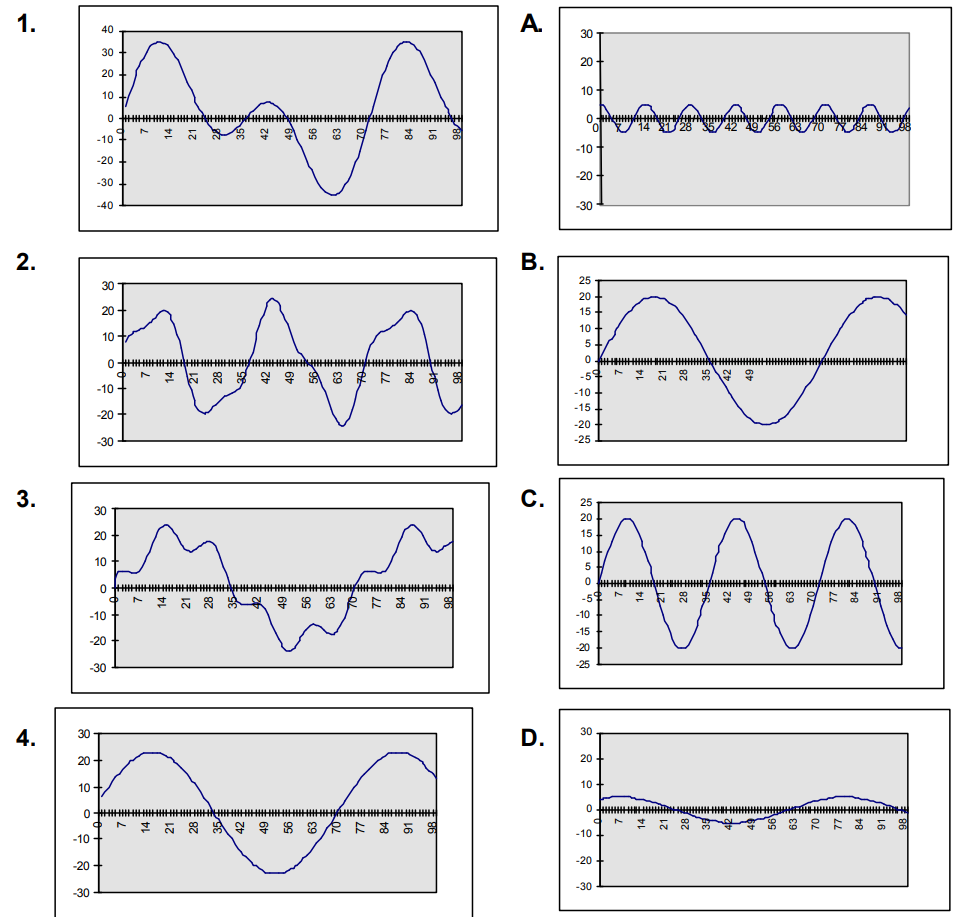Mathematics
Science
Grade Levels: 7th Grade, 8th Grade, 9th Grade, 10th Grade, 11th Grade, 12th Grade,
Topics: PhysicsPeriodic Functions
Concepts:
· Wavelength
· Amplitude
Lesson:
Procedure: Students should do this activity individually or in teams of two.
Distribute the handouts and make sure that students understand the instructions.
For more advanced students you may wish to have them begin the activity without further discussion.
For less advanced student, you may wish to lead them through an analysis of waveform #1, as follows:
Ask students if they think that waveform #1 could have waveform A as a component.
Lead students to the realization that since waveform #1 doesn’t have the shorter vibrations that are in waveform A, then waveform A could not be part of it.
Ask students which two of the three remaining simple waveforms (B,C,D) they think make up waveform #1.
Have them look at the height of waveform #1, which gets up to almost 40 units. Help them to see that since the height of waveform B is 20 and the height of waveform D is 5, there is no way to combine them and get waveform #1. Thus waveform #1 must be made of waveforms B and C.
Have them do the remaining three waveforms on their own.
Wrap up with a discussion of the concepts of “wavelength” and “amplitude” as applied to the activity.
Answers:
Waveform #1: B and C
Waveform #2:A and C
Waveform #3: A and B
Waveform #4: B and D
Apprentice Sound Engineer Drill #5
Waveforms
A sound engineer must do more than just listen; he should be able to look at the sounds being produced by his equipment and rapidly identify exactly what he’s looking at.
An experienced professional could do the exercise below in two minutes. Can you do it in ten?
Each waveform on the left is made by combining two of the waveforms on the right.
Match them.

